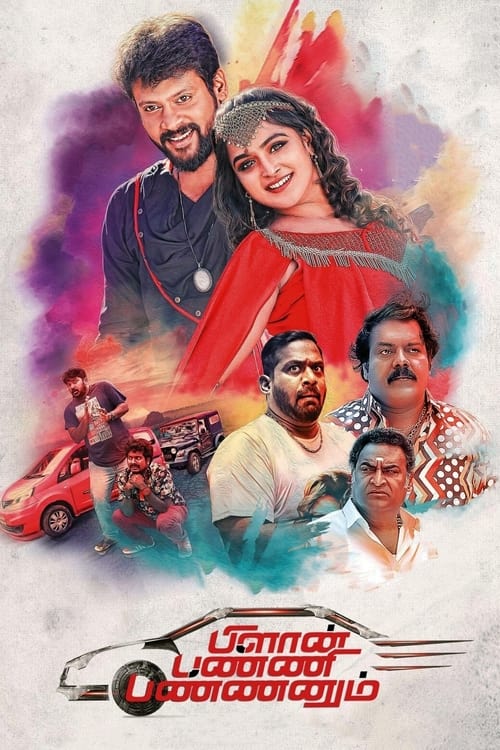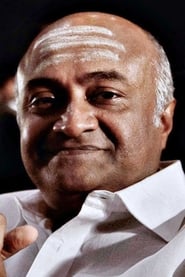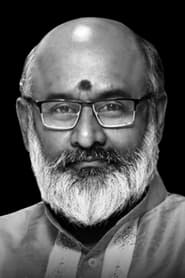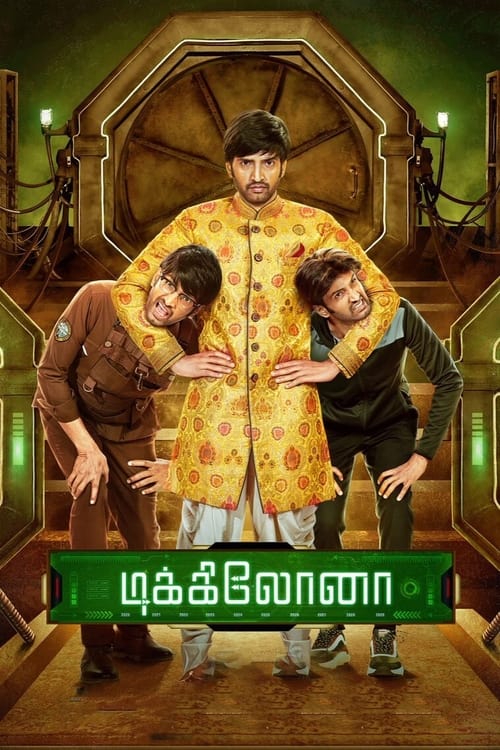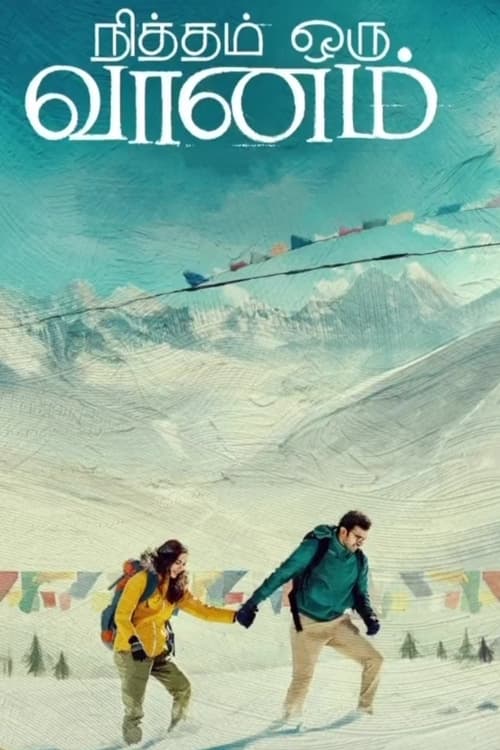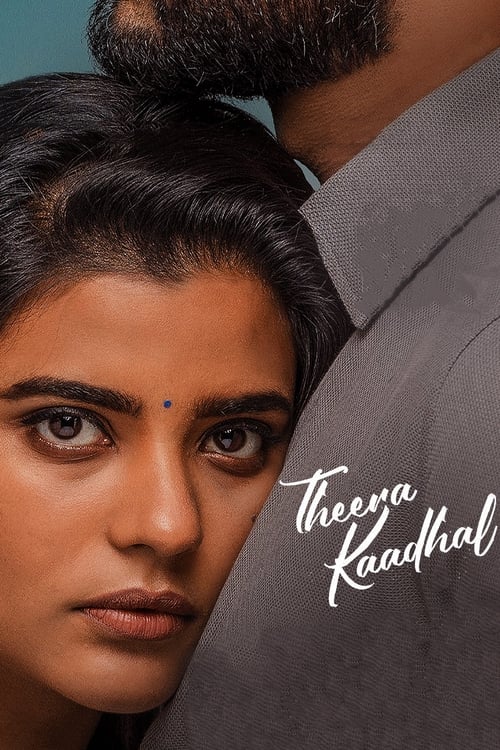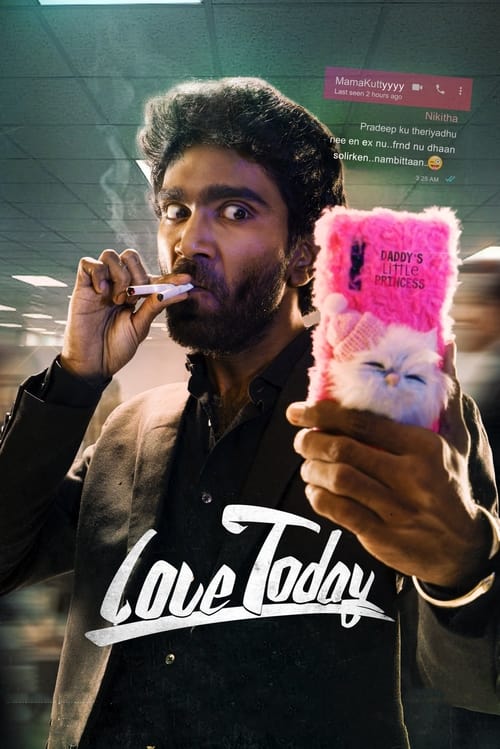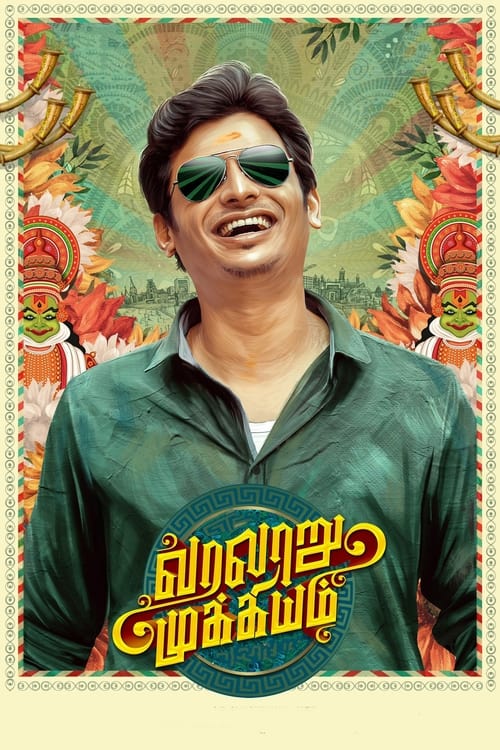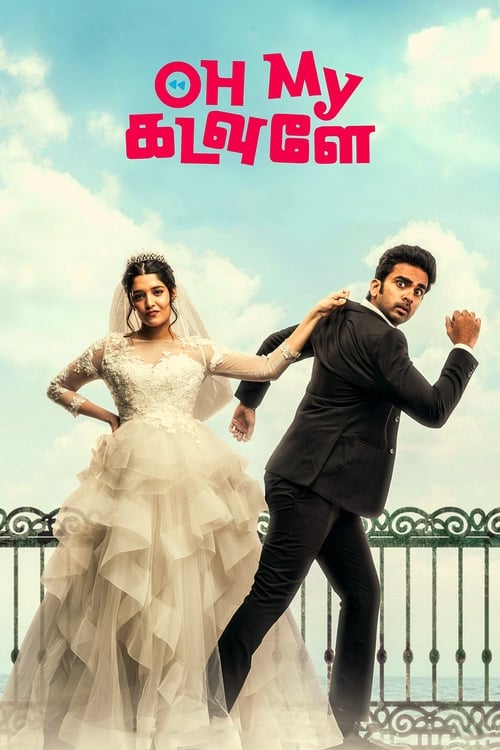
Ask Your Own Question
What is the plot?
In the bustling city of Chennai, two close friends and IT colleagues, Sembi and Raju, navigate their ordinary lives with a mix of earnestness and humor. Sembi, hailing from a North Madras background, carries a street-smart yet sincere demeanor, while Raju is more impulsive and lighthearted. Their camaraderie is evident as they share jokes and banter in their office, setting a casual, comedic tone for the unfolding story.
The equilibrium of their routine is disrupted when news arrives that Raju's sister, Radha, has eloped with her boyfriend Bharath Raj. This revelation sends ripples of concern and urgency through their circle. Determined to find Radha, Sembi and Raju hatch a plan, their conversations peppered with the film's recurring theme: "Plan Panni Pannanum" -- you have to plan before you do it. The phrase underscores their cautious approach despite the chaotic situation.
Amid this, Aambal, a determined and ambitious young woman from a small town working alongside them, becomes an unexpected pivot in their quest. Aambal dreams of advancing her career, aiming for an offshore project in the United States, and her grounded pragmatism contrasts with the friends' frantic energy.
Their search begins in Chennai, where the trio's professional and personal lives intersect. The office scenes reveal their dynamics and motivations, but soon the journey takes a turn when a driver named Thilagam offers them a ride. What starts as a short trip unexpectedly extends into a road journey to the hill station of Kodaikanal, a stark contrast to Chennai's urban sprawl. The misty hills and serene landscapes of Kodaikanal symbolize the quest's emotional and physical distance from their familiar lives.
On the way, the trio encounters a series of comedic and tense situations. They owe money to Captain Kandasamy, the manager of a glamorous star, who becomes a recurring figure of tension and humor as Sembi and Raju try to evade his demands. Their antics with Captain Kandasamy add levity but also underscore their precarious situation.
The search intensifies when they decide to kidnap Aambal, suspecting she knows Radha's whereabouts. This act, though morally ambiguous, is portrayed with a blend of tension and comedy. The kidnapping scene is charged with sharp, witty exchanges, as Aambal challenges their assumptions and demands answers. Her spirited defiance and quick wit create a dynamic interplay, with Sembi and Raju caught between desperation and guilt.
As they press Aambal for information, the narrative reveals deeper layers. Aambal confesses her role in helping Radha escape her father's traditional expectations, highlighting her as a supportive ally rather than a mere informant. This revelation shifts the tone from mere search to a nuanced exploration of personal freedom and societal constraints.
Radha's story unfolds through a poignant monologue delivered in Kodaikanal, where she confronts her father's insistence on a traditional arranged marriage. Her voice is a mix of frustration, hope, and resolve as she declares her desire to break free and pursue her dreams abroad. The monologue is both humorous and heart-wrenching, capturing the tension between old customs and new aspirations. Radha's words resonate: "I am not just a girl to be married off. I want to live, to breathe, to decide my own fate."
Meanwhile, the subplot involving Arokkiyasaamy, a man who secretly films men in compromising situations to blackmail them, adds a layer of social commentary and tension. Though his presence threatens the protagonists, the conflict resolves without violence, maintaining the film's comedic undertone.
Marimuthu, introduced as an antagonist, appears briefly but vanishes early in the narrative, serving more as a symbolic obstacle than a direct threat. His fleeting presence emphasizes the story's focus on interpersonal relationships rather than external villainy.
The climax converges in Kodaikanal, where Sembi, Raju, and Aambal finally locate Radha. The reunion is emotionally charged, with Radha standing firm against her father's traditional demands. Their confrontation is less about anger and more about understanding, as Radha articulates her need for independence and self-determination. Her father, portrayed by Aadukalam Naren, embodies the old guard, but his eventual acceptance marks a hopeful reconciliation.
No deaths occur throughout the film, preserving its lighthearted yet meaningful tone. The confrontations, though intense, culminate in emotional resolutions rather than violence.
In the closing scenes, Radha prepares to embark on her journey abroad, symbolizing liberation and new beginnings. Sembi, Raju, and Aambal reflect on their adventure, their friendship strengthened by the trials they faced. The final moments emphasize planning, friendship, and the courage to pursue one's dreams, echoing the film's central message.
Thus, Plan Panni Pannanum weaves a tale of friendship, love, and emancipation, set against the vibrant backdrops of Chennai and Kodaikanal, blending comedy with heartfelt drama in a narrative that culminates in hope and understanding.
What is the ending?
In the ending of "Plan Panni Pannanum," the main characters come together to resolve their conflicts and misunderstandings. The protagonist, along with his friends, manages to execute their plan successfully, leading to a series of comedic yet heartfelt moments. Ultimately, they find a way to reconcile their differences, and the film concludes on a positive note, emphasizing friendship and the importance of sticking together through challenges.
As the film approaches its climax, the scene shifts to a bustling marketplace where the protagonist, along with his loyal friends, is finalizing their elaborate plan. The atmosphere is charged with anticipation and a hint of anxiety. The protagonist, whose determination has been unwavering throughout the film, stands at the center, rallying his friends with a passionate speech about the importance of their mission. Each friend, reflecting their unique personalities, shows a mix of excitement and nervousness, revealing their deep-seated fears and hopes.
The plan unfolds with a series of comedic mishaps. As they execute their scheme, the friends encounter unexpected obstacles that test their resolve. One friend, known for his clumsiness, accidentally causes a scene that draws unwanted attention, leading to a frantic chase through the market. Laughter and chaos ensue, but amidst the turmoil, the bond between the friends strengthens. They support each other, showcasing their loyalty and camaraderie.
In a pivotal moment, the protagonist faces a moral dilemma when he must choose between personal gain and the well-being of his friends. This internal conflict is palpable, as he grapples with the consequences of his choices. Ultimately, he chooses to prioritize his friendships, leading to a heartfelt reconciliation with his friends. This decision marks a significant turning point in the narrative, highlighting the film's central theme of friendship over self-interest.
As the climax reaches its peak, the friends successfully complete their plan, albeit not without a few more humorous setbacks. The resolution comes when they confront the antagonist, who has been a source of conflict throughout the film. In a final showdown, the protagonist stands up to the antagonist, showcasing his growth and newfound confidence. The confrontation is intense but ultimately leads to a humorous resolution, where misunderstandings are cleared, and the antagonist is left bewildered.
In the aftermath, the friends gather to celebrate their victory. The marketplace, once a backdrop of chaos, transforms into a scene of joy and laughter. They share stories of their misadventures, reflecting on how far they have come together. Each character experiences a moment of personal growth, with the protagonist emerging as a leader, while his friends find their own strengths.
The film concludes with a heartwarming scene where the friends, now closer than ever, make a pact to always support each other, no matter the challenges they face in the future. The final shot captures them walking away together, laughter echoing in the air, symbolizing the enduring power of friendship and the importance of unity in overcoming life's obstacles. Each character's fate is intertwined, as they all find a sense of belonging and purpose, leaving the audience with a sense of hope and joy.
Is there a post-credit scene?
In the movie "Plan Panni Pannanum," there is indeed a post-credit scene that adds a humorous twist to the film's conclusion. After the main credits roll, the scene opens with the main characters, who have been through a series of comedic misadventures, sitting together in a café. They are discussing their recent escapades and the lessons they've learned, all while maintaining a light-hearted banter.
As they reminisce, one of the characters suddenly receives a phone call. The conversation reveals that they are being invited to another scheme, hinting at the possibility of a sequel or further adventures. The character's expression shifts from casual amusement to excitement, and they eagerly share the news with the group. The others react with a mix of enthusiasm and mock apprehension, joking about the chaos that might ensue.
The scene captures the camaraderie and playful spirit of the characters, leaving the audience with a sense of anticipation and laughter as the screen fades to black. This post-credit moment reinforces the film's comedic tone and the idea that their misadventures are far from over.
What motivates the main character, Karthik, to come up with the plan in the movie?
Karthik, portrayed as a struggling young man, is driven by his desire to win back his ex-girlfriend, who has moved on with someone else. His emotional turmoil and longing for love push him to devise a plan that he believes will help him regain her affection, showcasing his vulnerability and determination.
How does Karthik's relationship with his friends influence the development of the plan?
Karthik's friends play a crucial role in shaping the plan. They provide comic relief and support, but also challenge Karthik's ideas, leading to moments of conflict and camaraderie. Their differing opinions and personalities create a dynamic that influences the plan's evolution, highlighting themes of friendship and loyalty.
What obstacles does Karthik face while executing his plan?
Throughout the execution of his plan, Karthik encounters various obstacles, including misunderstandings with his friends, unexpected interventions from his ex-girlfriend's new partner, and his own self-doubt. These challenges test his resolve and force him to adapt his strategies, adding tension and humor to the narrative.
How does the character of Karthik's ex-girlfriend, Meera, contribute to the plot?
Meera is a pivotal character whose actions and decisions drive much of the plot. Her initial indifference to Karthik's attempts to win her back creates a sense of urgency and desperation in Karthik. As the story unfolds, her character reveals layers of complexity, showcasing her own struggles and ultimately influencing Karthik's growth.
What role does humor play in the interactions between Karthik and his friends during the planning stages?
Humor is a significant element in the interactions between Karthik and his friends, often serving as a coping mechanism for their insecurities and fears. Their banter, witty remarks, and comedic mishaps during the planning stages not only provide levity but also deepen their bonds, making the audience connect with their journey on a more personal level.
Is this family friendly?
"Plan Panni Pannanum," produced in 2021, is a family-friendly film that primarily focuses on humor and light-hearted themes. However, there are a few aspects that might be considered objectionable or upsetting for children or sensitive viewers:
-
Mild Language: The film contains some instances of mild profanity or slang that may not be suitable for younger audiences.
-
Romantic Situations: There are scenes that involve romantic relationships and flirtation, which may include suggestive dialogue or situations that could be uncomfortable for younger viewers.
-
Conflict and Tension: The plot includes moments of conflict and tension among characters, which may evoke feelings of anxiety or discomfort, particularly in scenes where misunderstandings lead to arguments.
-
Physical Comedy: Some physical comedy may involve slapstick humor that could be perceived as violent or aggressive, though it is intended to be humorous.
-
Emotional Moments: There are scenes that explore themes of disappointment and failure, which may resonate emotionally and could be upsetting for sensitive viewers.
Overall, while the film is designed to entertain a family audience, these elements may warrant parental guidance for younger viewers.

